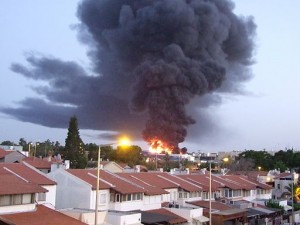The War of the Weak
Hamas has no regular army, navy or air force, whilst its enemy Israel have fully intergrated armed services and the “iron dome” rocket defence system to protect their civilians from attack. How then do the Palestinians hope to win? The short answer is that like many revolutionary groups seeking release from foreign domination they use the tactics of the weak against the strong.
Hamas do not seek to hold territory or consolidate a fixed position like a conventional army. Their irregular fighters seek only to hit and run and then melt into the civilian background using them to supply, hide and smuggle arms, to act as look-outs and to provide logistic support to locally organised cells of freedom fighters, rather like the Viet Cong during the Vietnam War. In an overcrowded urban labyrinth like Gaza, civilian casualties are always going to be high and disproportionate to those of their adversary.
This type of resistance dictates the tactics of their enemy. The Israelis avoid casualties, in particular trying to avoid the capture of soldiers who can then be used as bargaining chips against Palestinian activists held in Israeli jails. The best way to do this is to make maximum use of “shock and awe”, keeping the infantry at a relatively safe distance and hidden behind tanks. All this is perfectly familiar to American troops, having fought in Iraq.
The absence of foreign or regular forces also means that Hamas, like all Islamic fundamentalist groups, seek to embed their supplies and mobile groups of freedom fighters amongst the civilian infrastructure and thus gain maximum publicity coverage from the inevitable collateral damage to women and children. Hamas has always laid great emphasis in winning the propaganda war. The word and the image are powerful weapons of war and always have been in Middle Eastern conflicts, just as they were against the Americans in Vietnam and Iraq. What they cannot get willingly from the civilian population they can take by threatening their families. Again, this is a strategy quite familiar to all resistance groups throughout modern history.
Hamas’ propaganda wars play to several audiences. The first is Palestinian youth. Israel’s current incursion into Gaza has successfully recruited the next generation of Hamas fighters. Second are potentially sympathetic organisations like the UN, many members of which have fought their own colonial battles. Thirdly there is public opinion in the Middle East: the natural allies of Hamas are all anti-Israel. However, much of this audience is currently exercised in civil war amongst Shia’s and Sunni. Finally, there are the European audiences, currently somewhat divided: Germany and France feel some residual guilt around the holocaust, but have serious issues with the Islamic diaspora
Lastly, time is on the side of Hamas; they accept that the struggle may last 10, 20 or 30 years. They believe that neither Israel nor its backers can last that long, and they could be right.
